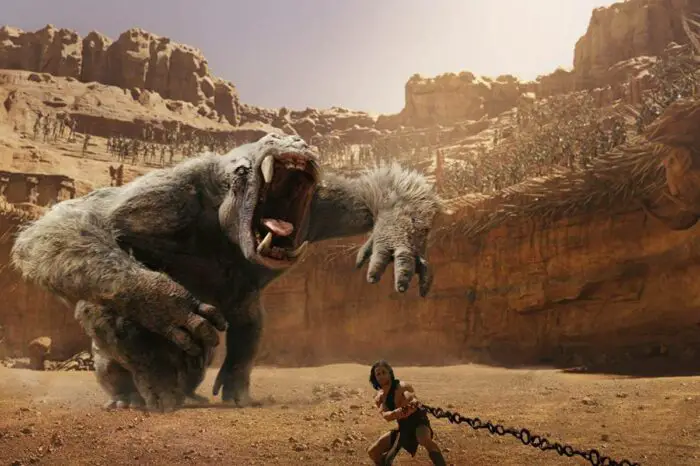
Not to start on a soapbox right of the gate, but the topic of “youthful ignorance” keeps popping in my mind and begs to be discussed with the misunderstood John Carter from Walt Disney Pictures. Simply put, without a little investment in discovering or investigating the past, the youth of today likely know very little of the generation before them. The most important thing one can do to avoid youthful ignorance is to learn and know one’s influences. Few things are entirely new in any Hollywood genre.
Something appearing unique always has an inspiration or influence from the past that was the creative spark towards the new twist of the present. That’s the thing people are not going to appreciate about John Carter. An entire generation of either uninformed, uneducated, or youthfully ignorant viewers are going to call it an Avatar knockoff or a Star Wars wannabe when nothing could be further from the truth. In fact, in an opposite trajectory, we wouldn’t have Avatar or Star Wars without John Carter.
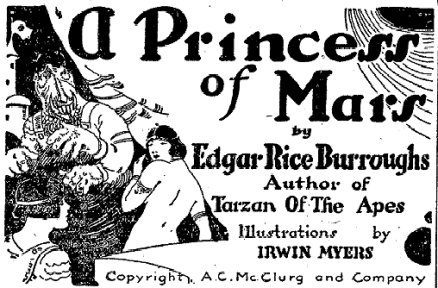
The film is based mostly on Edgar Rice Burroughs’ A Princess of Mars, the first of an epic 11-part series of science fiction pulp novels set on our red planet neighbor. Burroughs is better known as the creator of Tarzan, another character that, in this century, has likely become dated, even with a Disney animated treatment nineteen years ago. The infinitely detailed world that Burroughs created over a century ago in 1912 when it originally debuted as a magazine serial was transcendent and wildly inventive.
Even larger, the Baroom series stands as one of the major influences for George Lucas in creating Star Wars, James Cameron’s Avatar world, and the science-fictional novelists that followed such as Ray Bradbury and Carl Sagan. To those gentlemen, the John Carter adventures from Burroughs were their childhood “light bulb” discovery and fantasy, and it came in novel form, not a cartoon or a movie. Unless he or she has a nostalgic and eclectic pair of parents, a ten-year-old wearing 3D glasses and a Stranger Things t-shirt today isn’t going to know that. Andrew Stanton’s film admirably brings pulp spectacle to eye-popping life. It is currently available as a streaming title on Netflix.
Taylor Kitsch, working on his movie star rise in 2012 after TV’s Friday Night Lights with this and the true clunker Battleship, stars as the title hero. He begins as a grieving Confederate Civil War veteran who tragically lost his family to a fire and his story is being read to us out of his personal journal by his nephew, Edgar Rice Burroughs himself (Daryl Sabara). While prospecting in Arizona, he discovers a cave of gold while dodging Apache braves and his former military duty.
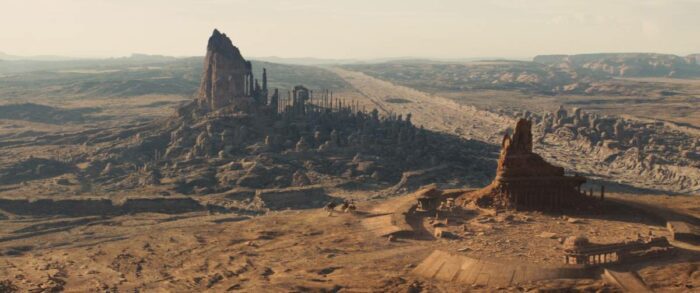
In that cave, he is mystically transported to a barren desert landscape unlike any he’s seen, with just a mysterious medallion as a possible cause for this change. Upon moving, John notices a difference in gravity that grants his Earthly muscles with superhuman strength and agility, including incredible leaping ability. Once he meets the natives, 15-foot-tall green creatures with six limbs called Tharks, he realizes he’s far from home. He’s in (or on) Barsoom, better known to John as the planet Mars. It’s an aging and dying planet that is slowly losing its oxygen, water, and atmosphere.
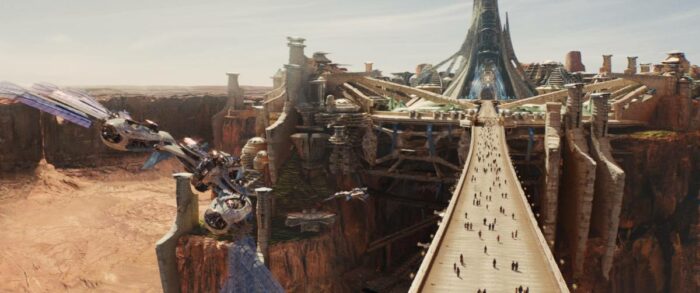
The Tharks wonder at his abilities and take him captive, where John develops a good rapport with one of their leaders, Tars Tarkas (voiced by go-to tentpole mentor actor Willem Dafoe). Soon, John encounters and intervenes with two feuding factions of humans, the peaceful city of Helium, led by Tardos Mors (Ciaran Hinds), and the war-mongering Sab Than (professional movie villain Dominic West) from the rival city Zodanga.
In a daring display of this agility and courage, John rescues the Helium princess Dejah Thoris (Lynn Collins of X-Men Origins: Wolverine). With his unmatched capabilities, John finds himself to be somewhat of a chess piece that could swing the balance of control between the warring humans and the outcast Tharks. Watching over all are the holy Therns (embodied by fellow professional movie villain Mark Strong) who are the puppeteers of power and hold the key to John’s way home.
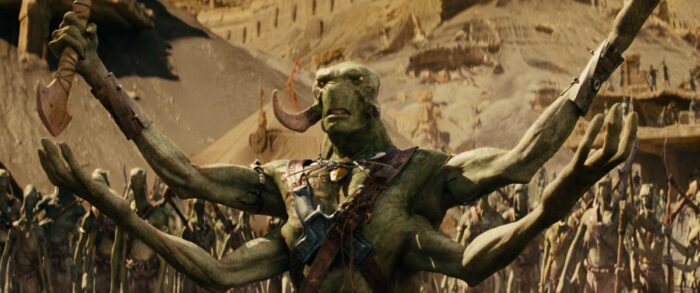
The different Martian creatures, factions, and societies are, in a way, thinly veiled allegories to race relations. It then becomes about choosing sides in a conflict. Each side is sharply divided and prejudice, before the transcendent figure of the John Carter character bridges respect and relations between them. Parallels can be made to similar notions of noble savagery and racial themes that are found in the 19th century American western frontier that John originated from.
John Carter comes to honorably know the ramifications of taking a stand. That willingness to unite people doesn’t occur for John until he becomes right with himself and lets go of the past that plagues him. At one point midway into the film, in an emotional battle scene, John has finally decided to break neutrality, take up arms, and fight. Singlehandedly, he draws his sword and takes on a charging army with ferocity and the willingness to give his life. The movie artfully and poignantly combines every swing of his sword with a flashback memory of him finding and burying his lost family. That scene signified John’s emotional investment to draw the necessary moral courage and understand the ramifications of his role and actions.

Much like the racial comparisons mentioned earlier, John quickly sees the parallels between the Martian conflict and his own experiences during the Civil War and the purging of Native Americans out west. He sees a cause worth fighting for. While extremely capable at combat, he is reluctant to choose sides and doesn’t see a cause worth fighting for until it presents itself for him. Though it’s sometimes not the case, all conflict should represent causes worth fighting for. A just cause should be a civil, righteous, and moral requirement to justify the strife and violence.
If all of that lost you, don’t worry. Just suspend the necessary disbelief as you would with any fantasy setting. Remember, this story was made to be pure escapist entertainment, derived from early-20th-century pulp, right there with Buck Rogers and Flash Gordon. The movie has a lingo and a language all its own, not unlike its Avatar and Star Wars imitators, and that necessary origin story narrative slows the movie quite a bit at times.
At other times, the Civil War and family tragedy flashbacks create a nice extra layer to John’s character arc and motivations. You’re not going to catch and connect all of the details straight away, and neither is a ten-year-old kid. Even with its flaws, it’s a great deal better than The Last Airbender two years prior and many attempted tentpoles since. Along the same lines, no one was going to challenge for any acting awards.
Taylor Kitsch wasn’t earning an Oscar any more than Mark Hamill would with Star Wars or Arnold Schwarzenegger would for Conan the Barbarian. All he had to be was stoic and steady and he was those very two things. The same goes for Lynn Collins’ tough damsel-in-distress Dejah, who attains the proper level of eye candy without making waves. Taylor, with his prerequisite abs and soulful demeanor that match his characters’ grief and courage, plays the tortured leading man on the Brad-Pitt-Lite spectrum just fine. The supporting characters are worse, but let it go.
Besides, the story and acting take a back seat to the wonder and spectacle that Pixar director Andrew Stanton (in his first live-action feature after delivering Wall-E and Finding Nemo) and the talented team at Disney have created. That’s what the people were coming to see. With a budget reportedly north of $250 million, John Carter was packed with top-of-the-line CGI visual effects and impressive 3D scale that deliver on their price and promise. The movie, with its barbaric battles, earns its PG-13 rating (a rarity for Disney then) and kept the lovable sidekick tally very low, showing the dedication to create more of an adult and honest interpretation of Burroughs’ novels than just another amusement ride and Happy Meal promotion.
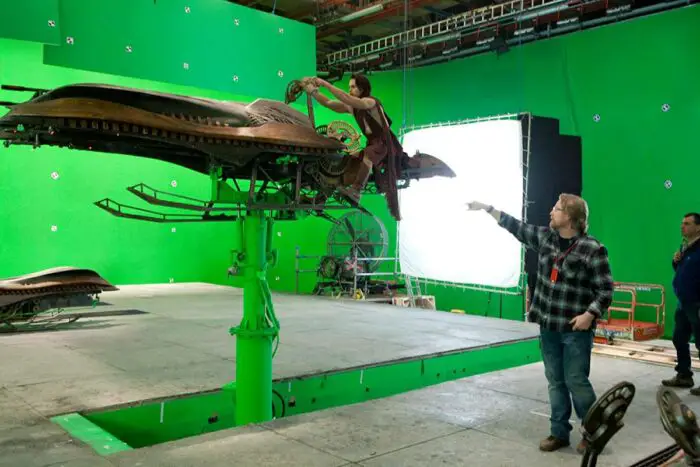
John Carter, not unlike its title character, jumps off of the screen in many ways. Stanton, much like fellow Pixar director Brad Bird who made his live-action debut with Mission: Impossible Ghost Protocol a few years earlier, brought an artist’s eyes to shooting breathtaking visuals and coherent action at the right pace and size, unlike the shaky cameras, constant close-ups, and obsessive jump-cutting of Michael Bay-style action movies. The result was a sumptuous feast for the 3D eyes and a movie experience much easier to watch than any of the Mummy and Pirates of the Caribbean franchise chapters, or other live-action Disney efforts like The Sorceror’s Apprentice or Prince of Persia: Sands of Time. Put it right next to Tron: Legacy for great Disney visuals.
Burroughs’ legendary visions and creations, from the Mars locales (thanks, barren state of Utah!) to the distinctive creatures, were stunningly rendered and did not overpower the humans beside them. Behind the visuals, Pixar veteran Michael Giacchino’s absolutely brilliant musical score gave the movie a magical, sweeping, and otherworldly Indiana Jones feel. It steers the movie along and brings us deep themes, romantic hues, and the right tone and aura of old-fashioned adventure.
The multi-million dollar question since 2012 has been why or how did John Carter fail. Considering the weight it was could have represented, the movie was grossly mismarketed. Titling it after the main character was too blank and non-descript. The powers-that-be either should have left the “of Mars” tag or just stuck with the full original novel title of A Princess of Mars. It’s as if they too didn’t know what they had.
The true clout that was missed was the inspirational mythology this Burroughs series represented for so many greats that followed. Imagine a trailer where either the narration or the on-screen scrolling text shares those enamored quotes from Lucas, Cameron, and the like. The glowing words from great creators of science fiction that came after Burroughs would be bowing before the untapped and tangible greatness of the Barsoom series arriving with John Carter. The Disney marketing machine could have built esteem and then dangled the mystery and excitement that awaited.
Even with its narrative flaws that drag the pace at times and unmemorable acting, John Carter was a worthy and overdue (many studios have been trying to get this made since the 1930s) edition to the science fiction and fantasy genres. The climax begged for a sequel and continuing franchise for Stanton, Kitsch, Collins, and company that will never come. In an industry filled with bad and unnecessary sequels every year, John Carter was a film time and commitment to grown and improve. As it turned out, though, youthful ignorance prevailed. Too many people made uninformed and pitiful Avatar and Star Wars comparisons. They didn’t let the source material and this ending product stand on its own. They wrongly labeled it a copycat, when the opposite is the real truth.



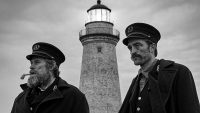
I enjoyed your article and I agree with you. This movie achieved its purpose a fun summer popcorn film and it was excellent as that. The audience dropped the ball on what could have been a tremendous franchise.
Disney wanted to make John Carter a kid’s movie. The book aren’t kids books.. not by today’s standards at least – especially if converted to live action. The characters are constantly referred to as nude or near nude, the action is gory as all get out
Personally this story deserves the GRRM treatment – bring it to the small screen on a subscription service and stay close to the books as much as possible.
The film is based mostly on Edgar Rice Burroughs’ A Princess of Mars, the first of an epic 11-part series of science fiction pulp novels set on our red planet neighbor.
I take exception to that statement. This movie baers little resemblense to Burrough’s excellent novel. If Stanton had stuck to the stroy and tried to make it his own story it would most like ly have been a better movie. So many people don’t seemt get it that the main reason this movie bombed is because it sucks.
Care to show ANY adaptation of the genre closer to the source? I hear people like you make this complaint all the time, yet you never make comparisons for people to see your point. I suspect that because despite dumping on the film for such an entirely irrelevant point you also don’t want people to correct your assertions that others got it better. I’ve read the books, pulp installments really, not novels. No Tarzan film comes anywhere close to fidelity of the source that this one has. The same with the Conan films, Harry Potter, H.Rider Haggard’s tales, Sherlock Holmes, Journey to the Center of the Earth, Fantastic Voyage, any of the Sinbad fare, and of Harryhausen’s films, none of them come as close to the source material as this has. It’s fine to not like the film. Just refrain from the complaint of lacking fidelity. Are there things I would like the film to have covered or handle differently? Sure. But to date few films come close or closer to the inspiration of this tale.